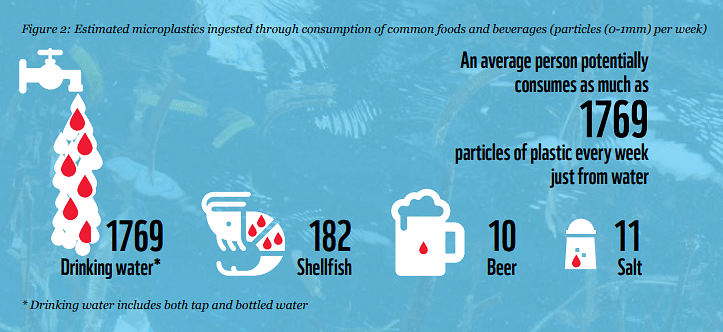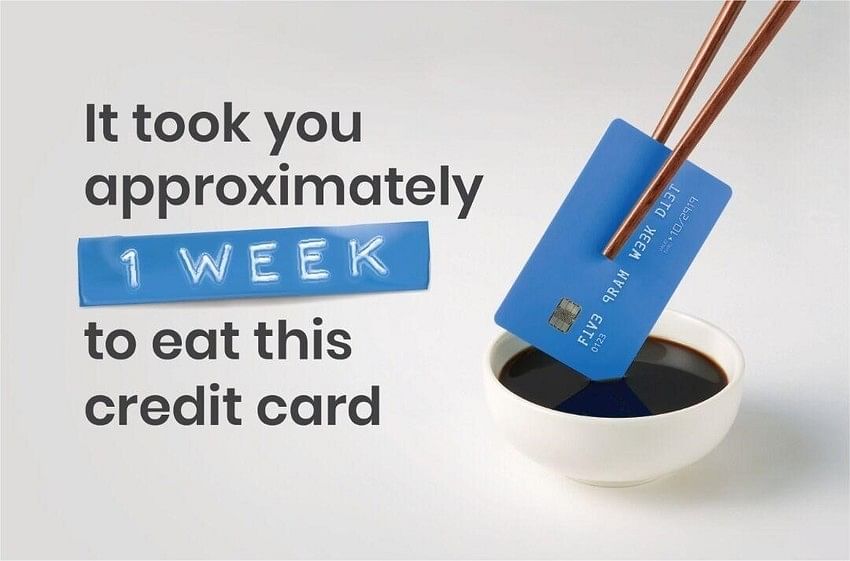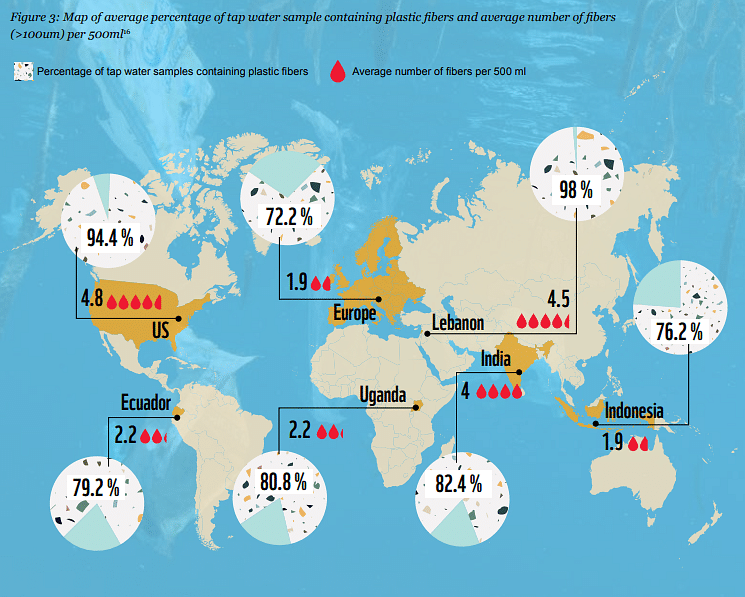Think about eating your credit card.
While it might not sound that appetizing, new research shows you probably ingest that weight of plastic a week without realizing.
People around the world are consuming about 5 grams of microplastic a week, according to new research from the University of Newcastle, Australia commissioned by the World Wildlife Fund. That’s more than 250 grams a year – equivalent to a small plastic jar for every person.

Most was consumed through water, including both bottled and tap. Of the consumables studied, the highest volume of plastic was found in shellfish, beer and salt.
The findings expose a new aspect of the debate. While most of us are aware of the volume of plastic flowing into the environment, and know that better disposal and recycling policies are needed, this report shows the scale may be more widespread than initially estimated.
The WWF report, Assessing Plastic Ingestion, calls for governments to play a key role in making manufacturers and consumers more accountable. That work echoes the Loop Alliance, launched at the World Economic Forum’s Annual Meeting 2019 in Davos, which aims to help introduce zero-waste packaging to end plastic pollution.
The Forum estimates that more than 90% of plastic is never recycled, and 8 million metric tons of plastic waste are dumped into the oceans every year. Using its System Initiative on Shaping the Future of Consumption, it wants to advance responsible consumption and ensure sustainable benefits for businesses and society.
“We can’t escape consuming plastics,” said Marco Lambertini, WWF International Director General. “If we don’t want plastic in our bodies, we need to stop the millions of tons of plastic that continue leaking into nature every year.”

In the University of Newcastle study, large regional variations were discovered, with twice as much plastic found in the US or India than in European or Indonesian water. The full study is being reviewed for publication, and the university plans to publish the full methodology and supplementary data once it is accepted.

It said the implications of plastic ingestion by humans weren’t yet fully understood and that more investigations are needed.
so how much is absorbed? probably nothing. We just shit it out? Like corn.
— C S (@bfan77) June 12, 2019
“This study has helped to provide an accurate calculation of ingestion rates for the first time,” said Dr Thava Palanisami, project co-lead and microplastics researcher at the University of Newcastle. “Developing a method for transforming counts of microplastic particles into masses will help determine the potential toxicological risks for humans moving forward.”
Also read: New sight from space, floating plastic islands



